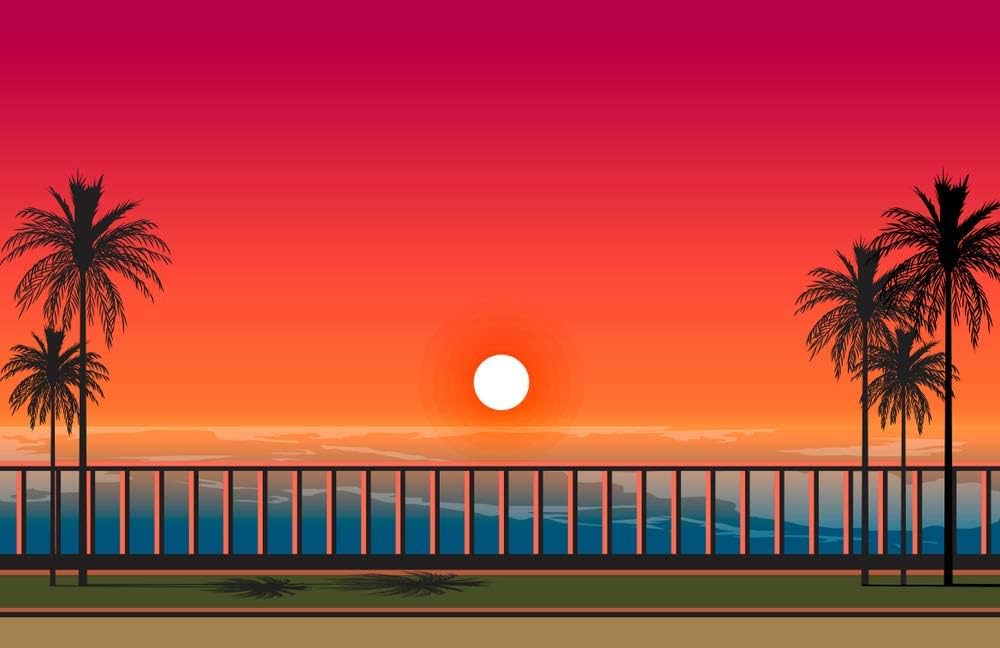Sunset drawing are one of nature’s most captivating displays, a daily spectacle that paints the sky in a mesmerizing array of colors. The transition from day to night is not just a visual treat but also an emotional experience, evoking feelings of calm, reflection, and awe. Capturing the essence of a sunset through drawing is both a challenge and a joy for artists of all levels. In this article, we will explore the art of sunset drawing, covering everything from the materials and techniques to the colors and compositions that bring this beautiful phenomenon to life on paper.
The Appeal of Sunset Drawings
Sunset drawings are popular because they represent a universal experience that resonates with people worldwide. Whether on a tropical beach, a quiet countryside, or a bustling city, sunsets are a reminder of the beauty and transience of life. They are a perfect subject for art because of the vibrant colors, dramatic contrasts, and ever-changing sky patterns. Each sunset is unique, offering endless opportunities for artists to experiment with different styles, techniques, and interpretations.
Choosing the Right Materials
Before diving into drawing a sunset, it is crucial to choose the right materials. The tools you select will significantly impact the outcome of your artwork. Here are some popular choices.
Paper
The type of paper you choose can affect how your drawing looks. Smooth paper is ideal for detailed work, while textured paper adds depth and character. Watercolor paper is suitable for using wet media like watercolors or inks.
Pencils
Graphite pencils are excellent for sketching outlines and adding fine details. Colored pencils can create rich, vibrant colors that mimic the hues of a sunset. A range of hardness, from soft (B) to hard (H), allows for varied shading and detailing.
Pastels
Soft pastels are perfect for blending and creating smooth transitions between colors. Their soft texture makes it easy to cover large areas quickly, which is ideal for rendering the sky. Oil pastels offer vibrant colors but can be more challenging to blend.
Paints
Watercolors, acrylics, and oils are popular choices for sunset paintings. Watercolors offer a delicate, translucent effect, while acrylics provide bold, bright colors. Oils are excellent for creating rich, textured effects, but they require more time and skill to handle.
Inks and Markers
Inks can produce bold, dramatic lines and are perfect for adding dark silhouettes. Markers are great for vibrant, solid colors and can be layered to create depth.
Understanding Color Theory
Color is the heart of sunset drawings. Understanding color theory is essential to capture the magic of a sunset. Here are some key concepts to keep in mind.
Warm Colors
Sunsets are dominated by warm colors such as reds, oranges, pinks, and yellows. These colors create a feeling of warmth and are associated with light and energy.
Cool Colors
Blues and purples often appear in the sky during sunsets, especially as the sun dips below the horizon. These colors add contrast and balance to the warm hues, creating a harmonious composition.
Complementary Colors
Using complementary colors (colors opposite each other on the color wheel) can create striking contrasts. For example, the orange of a sunset against the blue of the ocean or sky can make both colors appear more vibrant.
Gradients and Blending
Sunsets are characterized by smooth transitions between colors. Mastering the art of blending and creating gradients is essential. Practice blending colors from dark to light and mixing colors to create a natural, seamless look.
Techniques for Drawing Sunsets
Creating a realistic and visually appealing sunset requires a combination of techniques. Here are some methods to help you get started.
Layering
Start by lightly sketching the horizon line and main elements, such as the sun, clouds, and any foreground objects. Begin with the lightest colors and gradually add darker tones, layering the colors to build depth and intensity.
Blending
Use your fingers, a blending stump, or a soft cloth to blend colors smoothly. For pastels and pencils, blending helps create a soft transition between colors, mimicking the natural gradients of a sunset.
Cross-Hatching
For a more textured look, use cross-hatching (drawing intersecting lines) to create shadows and depth. This technique can be used with pencils, pens, or markers.
Scumbling
This technique involves using a dry brush or pastels to lightly apply a layer of color over another, creating a textured, broken color effect. It’s great for adding the look of clouds or the reflection of light.
Wet-on-Wet Technique
If using watercolors or diluted inks, the wet-on-wet technique involves applying wet paint onto a wet surface. This creates soft, flowing transitions and is ideal for painting skies.
Silhouettes
Silhouettes are a common feature in sunset drawings. They are created by painting or drawing objects as solid shapes without details, usually in black or a dark color, to stand out against the bright sky. Common silhouettes include trees, birds, mountains, and city skylines.
Composing Your Sunset Drawing
Composition is the arrangement of elements within a work of art. A well-composed sunset drawing captures the viewer’s attention and guides their eye through the scene. Here are some tips for composing a compelling sunset drawing.
Rule of Thirds
Divide your paper into a grid of nine equal parts using two horizontal and two vertical lines. Place key elements (like the horizon, sun, or main focal point) along these lines or at their intersections to create a balanced and visually appealing composition.
Focus on the Horizon
The horizon line is a crucial element in sunset drawings. It helps define the separation between the sky and the land or sea. Position the horizon either in the upper or lower third of your composition, depending on whether you want to emphasize the sky or the foreground.
Leading Lines
Use natural lines, such as the curve of the shoreline, the direction of clouds, or the silhouette of a road, to guide the viewer’s eye toward the focal point of your drawing. Leading lines create a sense of movement and depth.
Foreground Elements
Adding elements in the foreground, such as trees, rocks, or buildings, can create depth and perspective. These elements can also provide context and interest, making your sunset drawing more engaging.
Negative Space
Negative space is the empty or unoccupied space around the objects in your drawing. Using negative space effectively can create balance and highlight the main elements of your composition.
Capturing the Mood
The mood of a sunset drawing is influenced by the choice of colors, lighting, and the overall composition. Here are some tips for capturing different moods.
Serene and Peaceful
Use soft, muted colors and smooth gradients. A calm sea, a clear sky, and minimal foreground elements can evoke a sense of tranquility.
Dramatic and Bold
Use vibrant, contrasting colors and dynamic compositions. Dark silhouettes, stormy clouds, and a low sun on the horizon can create a dramatic effect.
Romantic and Warm
Warm colors like pinks, reds, and oranges set a romantic tone. Soft lighting, gentle waves, and elements like couples walking on the beach or birds flying in the sky add to the romantic atmosphere.
Mystical and Mysterious
Use cool colors, such as deep purples and blues, and add fog or mist for a mysterious feel. Silhouetted trees or distant mountains can enhance the mystical mood.
Practicing and Experimenting
Like any art form, mastering sunset drawing requires practice and experimentation. Here are some exercises to help you improve your skills.
Quick Sketches
Practice drawing quick, timed sketches of sunsets. Focus on capturing the essence of the scene rather than the details. This exercise helps develop your ability to see and capture the main elements quickly.
Color Studies
Create small color studies to practice blending and transitioning colors. Experiment with different color combinations and note how they change the mood and feel of the sunset.
Observation
Spend time observing real sunsets. Take note of how the colors change, how the light affects the landscape, and how the clouds move and change shape. Use photographs for reference, but try to draw from life whenever possible.
Different Mediums
Experiment with different drawing mediums to find what works best for you. Each medium offers unique possibilities and challenges. Try using pencils, pastels, watercolors, and inks to see how they affect your sunset drawings.
Tips for Beginners
If you’re new to sunset drawing, here are some tips to help you get started.
Start Simple
Begin with simple compositions and limited color palettes. Focus on capturing the basic shapes and colors before moving on to more complex scenes.
Use References
Don’t be afraid to use reference photos. Studying photographs can help you understand how light and color work in a sunset. Try to use your references as inspiration, adding your interpretation and style.
Practice Regularly
Like any skill, drawing improves with practice. Set aside time to draw regularly, even if it’s just for a few minutes a day.
Be Patient
Creating a beautiful sunset drawing takes time and patience. Don’t rush the process. Take your time to observe, sketch, and build up the layers of color.
Learn from Others
Study the work of other artists to see how they approach sunset drawing. Join art communities, attend workshops, and watch tutorials to learn new techniques and get feedback on your work.
Conclusion
Sunset drawing is a rewarding and enriching artistic endeavor. The beauty of sunsets lies in their infinite variety, offering endless opportunities for creative expression. Whether you are a beginner or an experienced artist, capturing the magic of a sunset on paper can be a deeply satisfying experience. By understanding color theory, mastering various techniques, and practicing regularly, you can create stunning sunset drawings that evoke the awe-inspiring beauty of twilight. So grab your art supplies, find a peaceful spot to watch the sunset, and let the colors of the evening sky inspire your creativity.










+ There are no comments
Add yours